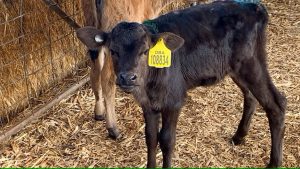The Xmas hamper we received this year had an unusual and exotic delicacy. There was a box containing artisanal single-origin chocolates made with camel milk. The dark chocolates came in different flavours and were sinfully seductive, especially those enriched with nuts and coffee beans.
Truth be told, we tasted camel milk during a visit to Bikaner some years back, but did not exactly fall in love with it due to its slightly salty, mildly sour and sharp taste. But the bite this time did what the initial gulp couldn’t.
The pandemic has engendered interest in immunity-boosting superfoods and camel milk seems to fit the bill perfectly. Camel milk producers claim that their offering has five times more vitamin C and 10 times more iron than cow’s milk.
They also cite scientific studies that have found higher levels of sodium, sodium, potassium, zinc, iron, copper, manganese, niacin than in cow’s milk, that has been considered the gold standard in India. (However, they concede that levels of thiamin, riboflavin, folacin, vitamin Bt12, pantothenic acid, vitamin A, lysine and tryptophan were relatively lower than those traced in cow milk.)
Camel milk is low in fat but with a high percentage of unsaturated fatty acids, it is described to be antimicrobial, antioxidant, antihypertensive, antithrombotic and more. Not all the claims have been proven in laboratory tests and one is well-advised not to treat camel milk as a broad-spectrum miracle cure.
What can’t be overlooked though is that it appears to have properties that can contribute significantly to glycemic control and combating insulin resistance.
The Food and Agricultural Organization, a specialized agency of the UN has issued a cautious certificate that “From all the data presented it is clear that the camel produces nutritious milk for human consumption.”
Those who are concerned about the state of the environment argue that the production of camel milk is more sustainable than bovine dairy farming and holds the promise of combating malnutrition globally.
Today camel milk is creating ripples far beyond desert regions in Arabia, Bactria, India.
Camels reached Australia in the middle of the 19th century and the Afghan camel drivers helped explorers chart an almost a 3000 kilometre stretch of arid wasteland from Darwin in the north to Adelaide in the south. Today their population go over a million with camels roaming in the wild and efforts to cull them haven’t succeeded. Enterprising Australians have taken to camel farming for milk production and its export.
The stricter laws in force differentiating food and medicinal products in the USA had in past inhibited the marketing of camel milk. Raw milk consumption was considered risky and unpasteurized camel milk was taboo. Advances in food processing and packaging technology have overcome most of these problems.
Chefs the world over are experimenting with this exotic ingredient to create irresistibly tempting dishes for gourmands and are designing products for the F&B industry that will soon cease to be a niche product–a passing trend– and may well claim a significant portion of health foods mass market.
Michelin plated Indian chef Nishant Choubey uses camel milk tofu and never tires of telling his East Asian guests that those with lactogenic intolerance can safely indulge in it.
Aadvik the pioneering Indian company that has come out with artisanal chocolates also produces camel milk powder that can be reconstituted as per need and flavoured milkshakes along with camel milk ghee. Iconic Amul also is marketing camel milk as a special product ‘beneficial for health.’
The ‘ship of the desert’ in years to come may well be identified as the ‘moveable dairy farm!’

















